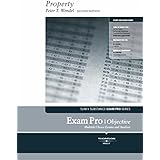Many professionals understand the importance of consistent outbound prospecting. The effectiveness of
cold calling
is well-known. Despite this awareness, maintaining consistency often proves challenging. This sentiment is commonly shared across various industries. The video above delves into these core difficulties. It offers practical strategies for overcoming resistance. These insights can transform a hesitant approach into confident action.Understanding the Core Challenge of Cold Calling
Inconsistency often plagues sales professionals. This struggle is quite common. We know we should make more calls. However, motivation can fluctuate significantly. Some days see intense effort. Other periods experience a noticeable drop-off. This pattern hinders long-term success. It creates a cycle of inconsistency.
The Fear of Exposure: Protecting One’s Ego
Most individuals unknowingly attach their self-worth to call outcomes. This internal connection affects performance. Questions arise about how one will be judged. Concerns about perceived anger or lack of answers surface. These thoughts enter the mind. They create psychological barriers. This reluctance stems from ego protection. The fear of exposure leads to avoidance. Therefore, many avoid these essential activities altogether.
Resetting Expectations: Cold Calling as a Sorting Process
A new perspective can be adopted for prospecting. This new approach involves resetting expectations. Prospecting should be viewed as a sorting process. This perspective greatly reduces pressure. It shifts the focus from individual outcomes. The aim becomes finding suitable opportunities.
Consider a large gumball machine. It contains many red gumballs. A sign promises two blue gumballs inside. These blue gumballs offer a significant prize. One starts inserting quarters. Red gumballs are dispensed repeatedly. This continues until a blue gumball finally appears. In this analogy, red gumballs are unsuitable prospects. Blue gumballs represent genuine opportunities. This sorting process defines successful prospecting.
Quantifying Opportunity: The 10% Rule in Prospecting
Years of experience and extensive data tracking reveal a key insight. The average opportunity rate for direct outbound prospecting is approximately 10%. This figure applies to actual conversations had. It does not refer to mere dials or attempts. Opportunities arise from meaningful interactions. These occur over phone, door, message, or email. Therefore, only about one in ten conversations yields a real prospect. This knowledge helps in resetting expectations. It prevents discouragement from frequent “red gumballs.”
The Law of Averages: Lessons from the Roulette Table
The law of large numbers governs these outcomes. Individual calls do not guarantee a specific result. Instead, averages emerge over many interactions. Imagine a roulette table. The ball has a 37.5% chance of landing on red or black. This probability remains constant. It does not change with each spin. Similarly, consistent
cold calling
efforts build up. Over hundreds of conversations, the 10% opportunity rate stabilizes. This understanding prevents trying to force outcomes. It encourages continuous engagement. Genuine leads are found through persistent sorting.Changing the Cold Calling Approach: Selling Against Your Own Interest
Traditional sales methods often create resistance. Prospects detect a sales pitch. They perceive a bias towards the seller’s benefit. This frequently leads to immediate pushback. A different approach is therefore needed. The concept of “reverse selling” proves effective. This strategy involves selling against one’s own interest. It alters the prospect’s initial perception. The conversation becomes an act of service.
For example, a traditional call might aggressively ask about moving plans. This often elicits a negative reaction. The prospect quickly disengages. They feel manipulated or pressured. This type of interaction is common. It reinforces negative stereotypes about sales. Such an approach causes resistance.
Shifting Perception: Service Over Sales Pitch
Reverse selling flips this dynamic. The call begins with an acknowledgment of inconvenience. The salesperson expresses understanding. They convey a non-pushy intent. For instance, a realtor might mention a recent sale. They then present a unique buyer need. The prospect is asked if they would even *consider* an offer. This framing reduces perceived bias. It positions the call as a potential benefit to the prospect. It comes across as an act of service. This approach invites the prospect to reveal interest. Only those truly interested will push back. They will indicate a need or desire for assistance. These are the “blue gumballs.”
Focusing on Actions, Not Outcomes, for Consistent Cold Calling Success
Many focus intensely on outcomes. Setting appointments is a common goal. Generating a certain number of leads is another. This outcome-centric view has drawbacks. If desired results are not achieved, the activity feels wasted. Agents often report “spinning their wheels.” However, these outcomes are often beyond direct control. External factors play a significant role. Therefore, disappointment can easily arise.
Leveraging Parkinson’s Law in Prospecting Activities
A better focus is placed on controllable elements. These include behavior, actions, and decisions. Success should be attached to completing specific activities. For example, a goal might be 27 conversations per day. Or, it could be two and a half hours of prospecting. When these activities are completed, success is achieved. This shift in focus is powerful. It ensures consistency and effort. The desired outcomes become a natural byproduct. Leading indicators (actions) are prioritized. Lagging indicators (results) then follow automatically. This prevents feelings of overwhelm. It eliminates disappointment from uncontrollable results.
Parkinson’s Law is highly relevant here. It states that work expands to the time given. If prospecting is a general daily task, it might stretch out. However, limiting the time creates focus. For instance, dedicating a strict 90-minute block for
cold calling
changes behavior. Humans become incredibly efficient with narrow scopes. This is evident before a vacation. An immense amount of work is completed quickly. This principle applies equally to sales activities. Strategic time blocking fosters maximum productivity. It drives consistent action, which is key for sales success.








